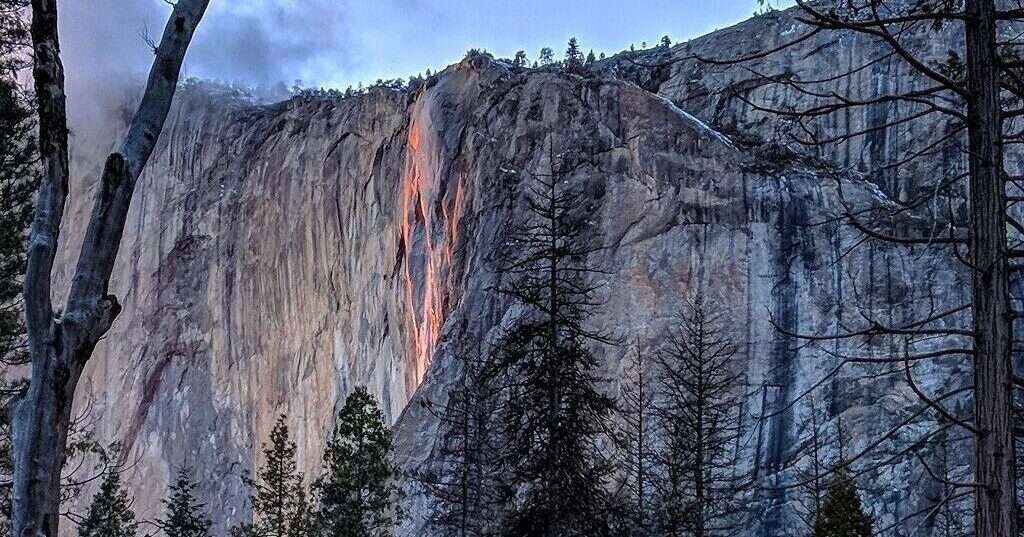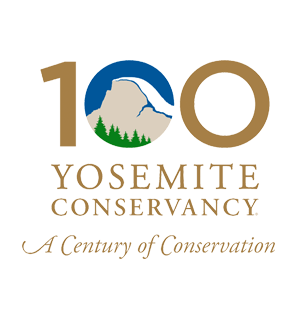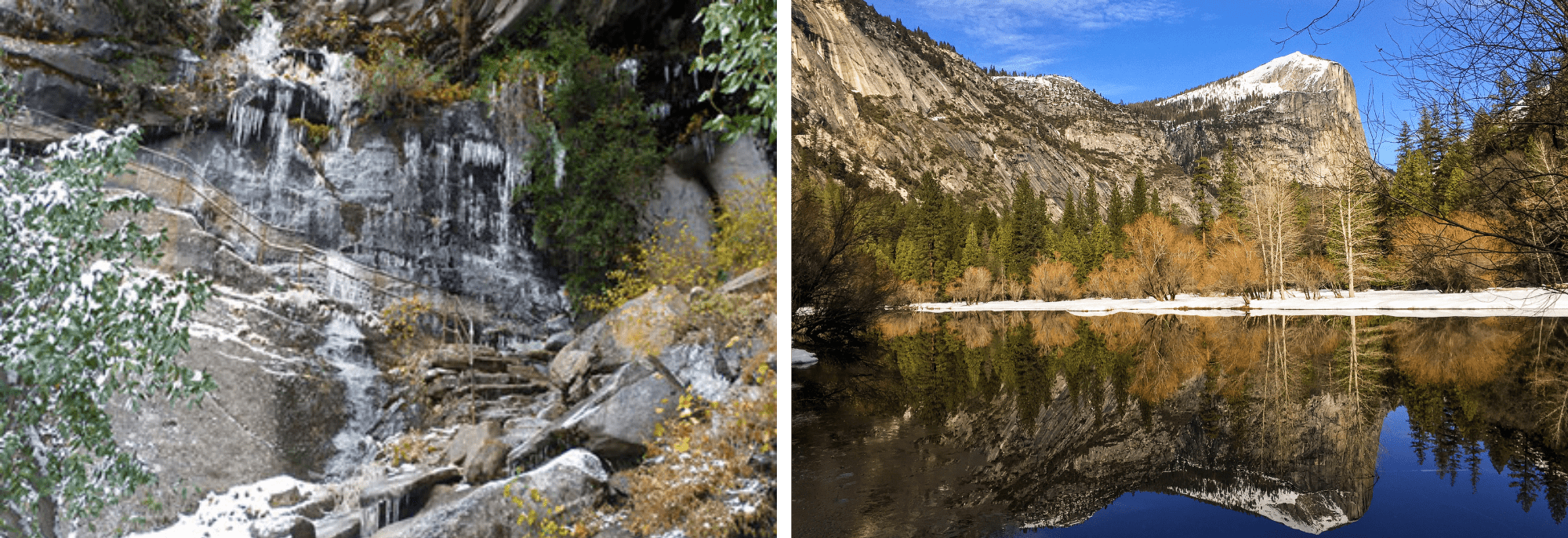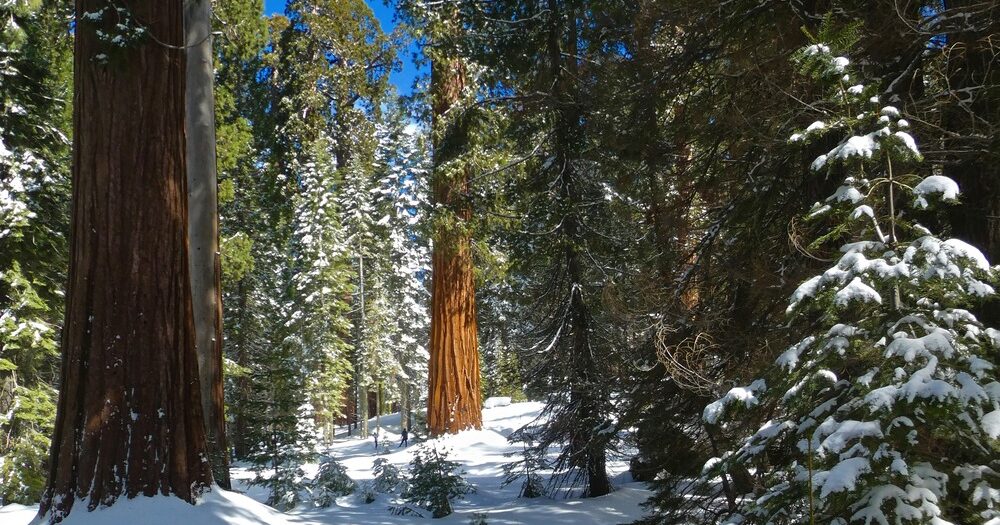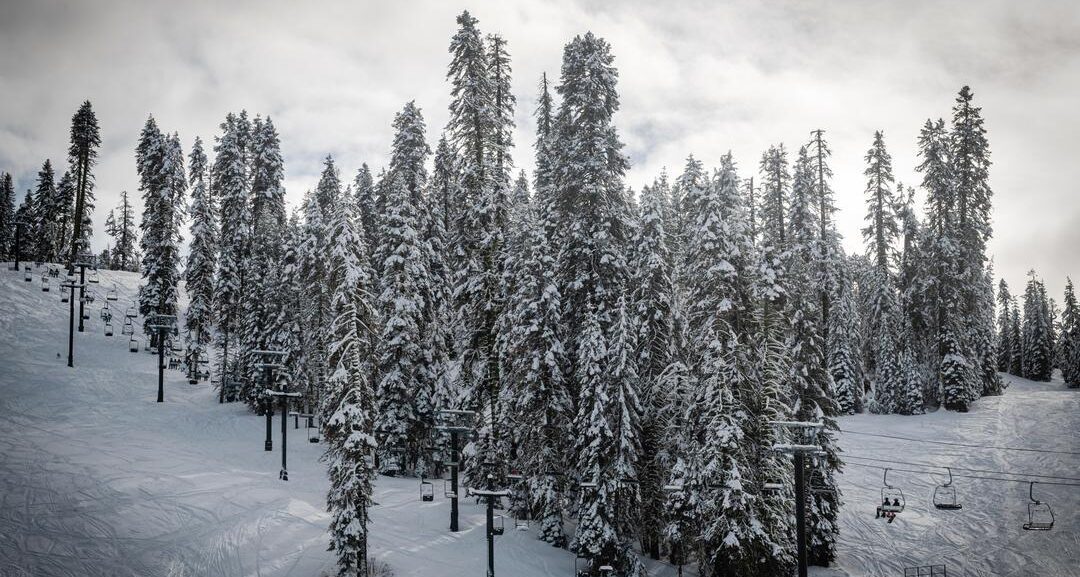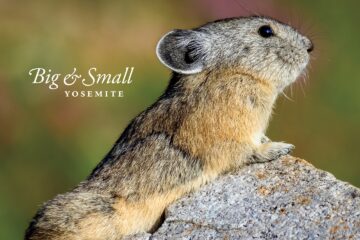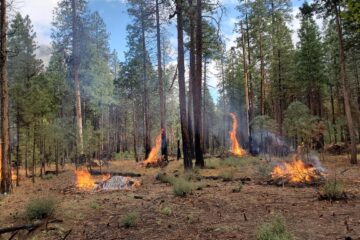Experiencing a Yosemite winter is a unique respite; colder temperatures abound, and bustling summer crowds have slowed.
But, as the busy season has come to a close, a magical Yosemite winter is in full swing. The Park is open all year, and there is plenty to do, see, and hike! Read on to see our favorites:
1. Spend a Yosemite winter day strolling through the Village
Looking for trip planning advice? Interested in experiencing Yosemite’s grand history firsthand? Need last-minute s’mores supplies? Find it all in Yosemite Village, a bustling cultural and educational touchstone of the Valley.
The park stays open all year, though it tends to quiet down in the winter months. For a day steeped in discovery and heritage (and some indoor heating!) check out these options:
Get oriented at the Welcome Center: Opened in November 2023, the Yosemite Valley Welcome Center hosts an array of visitor services and up-to-date park resources. Find everything you need to get your Yosemite winter trip started! Check road conditions, purchase supplies at the bookstore, or pick up a Junior Ranger workbook (based on availability).
Admire the art that started it all at the Ansel Adams Gallery: Under the same family ownership since 1902, the Ansel Adams Gallery is home to a prolific collection of Adams’ most masterful renderings of Yosemite (and more!), all free to admire.
Experience Indigenous artistry at the Museum: Admire the artistic skill of Yosemite’s seven associated American Indian Tribes and groups, from intricate baskets to traditional tools. The Museum also features additional exhibits on a rotating basis.

See Yosemite’s magic on the big screen: The Spirit of Yosemite is the park film, an encompassing narrative of Yosemite’s journey into being. Played every hour, on the half-hour, in the Theater behind the Exploration Center.
Step through history at the Indian Village: Learn native ways of life through this reconstruction, located on the former site of the largest Indian village in Yosemite Valley. Check out intricate outdoor exhibits while following a short walking path through bark houses, a sweathouse, a ceremonial roundhouse, and more. Follow all posted signs and be mindful as the village is still actively used by members of the local American Indian community for special events.
Indulge your curiosity at the Exploration Center: Visit the recently revamped Yosemite Now, an interactive exhibit space with scientific, cultural, and historic elements. And, wind your way through Yosemite’s history to an all-new display on the wild world of rock climbing!
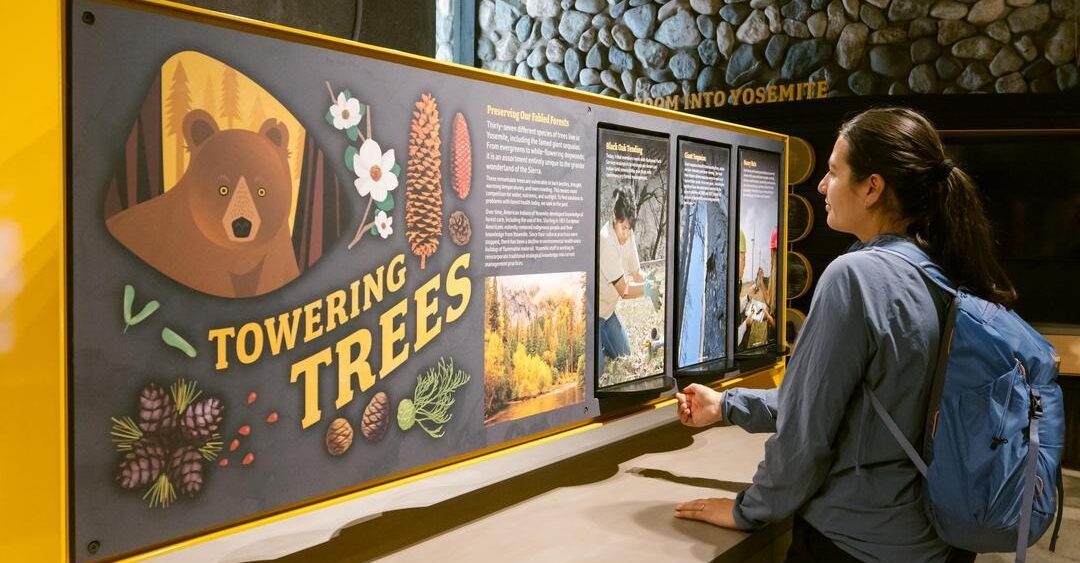
2. Traverse trails in the tranquil Yosemite winter
Experience the calm peace that rolls over the Valley when temperatures drop, and find an invigorating hike through this Yosemite winter wonderland. Always check trail information before heading out. See here for current trail conditions from the National Park Service.
Throughout your Yosemite winter visit, follow all posted signs. Trails can be closed due to hazards. Keep in mind that open trails, especially in the wintertime, are not guaranteed free of hazards.
For walks that may take up a few hours of your day, check out these one-mile loop trails:
- Search for animal tracks in Cook’s meadow and along Lower Yosemite Fall: Get in touch with your wild side and see if you can spot evidence of one of Yosemite’s 90 mammal species! Stick to the boardwalk trail, avoid walking directly on meadows, and follow all posted signs. Grab a field card, wildlife guidebook, and much more at the Exploration Center or Welcome Center.
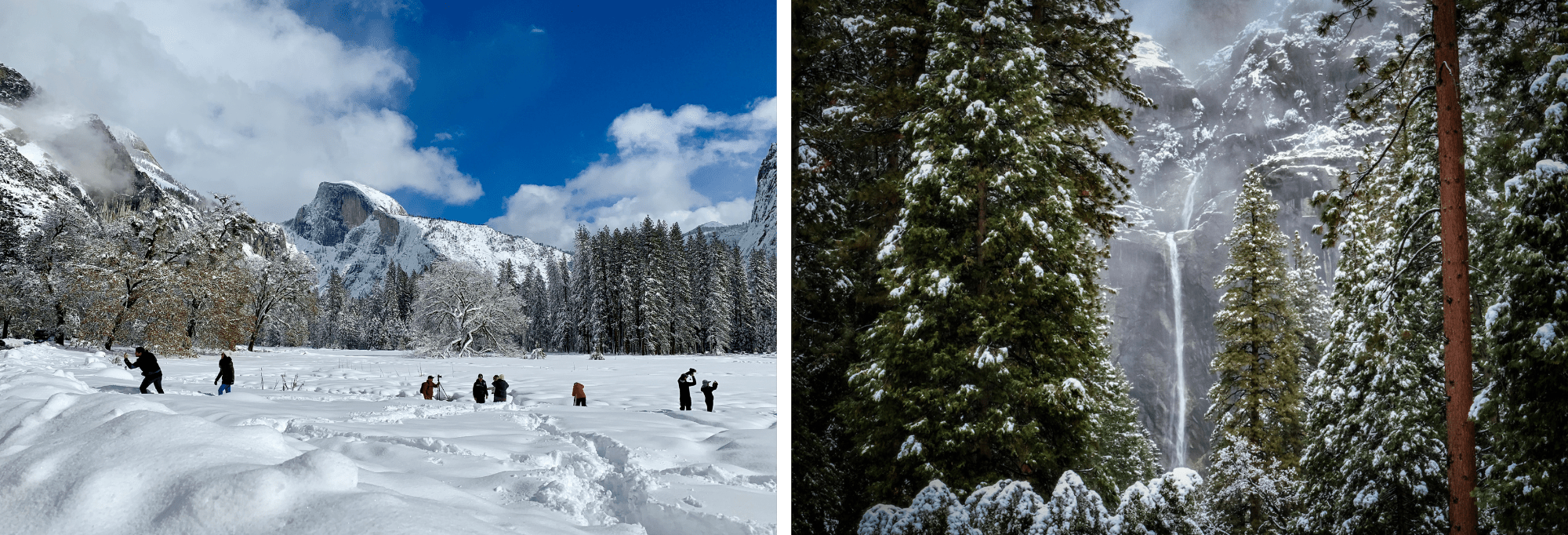
When the Yosemite winter weather is on your side and you’re looking for a few more miles:
- Spot a pileated woodpecker on the Mirror Lake Trail: Venture out on the 5-mile loop around Mirror Lake and see some of Yosemite’s 100+ bird species, plenty of which stay active in the Yosemite winter. Watch out for the pileated woodpecker’s brilliant red crest!
- Wind your way along the wild Mist Trail: See Vernal and Nevada Falls in all their icy grandeur! Beware of hazardous terrain. Pack crampons and snowshoes/other snow equipment. Follow all posted signs. In winter, parts of the Mist and John Muir trails are closed due to icy conditions and roundtrip mileage changes. See here for the Vernal and Nevada Falls: Winter Route.
- Enjoy stunning Valley Views along the Four-Mile Trail: Ascend the Valley walls as you follow an old historic toll trail, encountering staggering sights at every switchback. Due to treacherous conditions, only the lower 3 miles of the trail are open. There is no access to Glacier Point.
3. Marvel at Giant Sequoias
These giant sequoia groves are beautifully wild in any season, especially Yosemite winter. Note, the grove trails are not maintained in the winter, and may be hazardous due to snow and ice. Be prepared with crampons and/or snowshoes.
Merced Grove: Home to about 20 mature giant sequoias and an old ranger patrol cabin, the Merced Grove is a quiet inlet of hidden beauty. The 3-mile roundtrip trail is well-suited for hearty snowshoers and winter hikers; mind the 520-foot elevation gain on the return trip. Located along the Big Oak Flat Road (Highway 120), about 5 miles south of Big Oak Flat entrance.
Tuolumne Grove: Embark on your own journey through history at the Tuolumne Grove, starting at the trailhead. Follow one of the first roads into Yosemite Valley for 2 miles into the grove, then step through the Dead Giant Tunnel Tree, which was cut back in 1878! There is an additional half-mile loop trail around the grove, and an elevation gain of 500 feet when leaving the grove. Located on Tioga Road, east of Crane Flat.
Mariposa Grove: Walk amongst giants in the largest sequoia grove in Yosemite, containing over 500 mature giant sequoias! When visiting the Mariposa Grove in the winter, note the road closes to vehicles. Venture two miles (one-way) into the grove either on the road or the Washburn Trail; both routes gain about 500 feet in elevation. Once in the grove, choose your own adventure from a network of trails.
4. Ski with a view at Badger Pass
Home to the oldest downhill skiing area in California, Badger Pass was established to match the rising popularity of Yosemite winter sports. It was even submitted as a bid for the 1932 Winter Olympics! Read more about Badger Pass and Yosemite’s alternate histories.
Sitting at around 8,000 feet, Badger Pass offers a host of winter activities when conditions allow. Try out a backcountry ski tour, or rent a snow tube to maximize Yosemite winter play. Head to the website for updates on conditions and available equipment.
If the slopes aren’t snowy enough and the Ski Area is closed, cross-country skiing and snowshoeing are allowed on Glacier Point Road, Mariposa Grove, and Crane Flat.
5. Behold the Yosemite winter wonder of Horsetail Fall
If you’re visiting the park in mid-February, let this natural phenomenon take your breath away. In Yosemite Valley, search for a small cascade on the eastern edge of El Capitan. The sky must be clear, and the waterfall must be flowing. With the right conditions, Horsetail Fall becomes backlit by the setting sun, and glows brilliant shades of orange and yellow. See our Horsetail Fall Guide for reservation information and updates.
